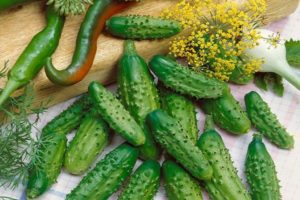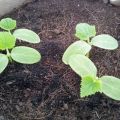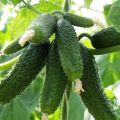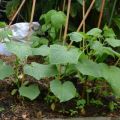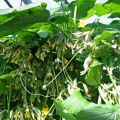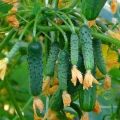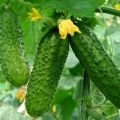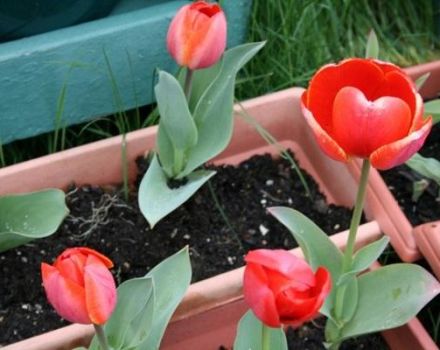Growing and the best varieties of bee-pollinated cucumbers for greenhouses and open ground
Bee-pollinated cucumbers were originally intended for cultivation in the open field and, according to their primary characteristics, corresponded to the conditions of regions with a temperate climate. All types of bee-pollinated varieties of cucumbers negatively tolerate sharp temperature jumps and require careful care, especially in a greenhouse, where it is not easy for insects to get into.
What are the types of bee-pollinated cucumbers
The choice of a variety of cucumbers should be consistent with the intended growing conditions and the intended use of the harvested crop. It is advisable to place several sections of open beds or small greenhouses on the site, where several types of bee-pollinated cucumbers will grow simultaneously, as well as 1-2 varieties of the parthenocarpic species - this way you can protect the crop from significant losses if the seedlings suffer from diseases or unstable temperatures.
Bush type of cucumbers
Of all the varieties of bee-pollinated cucumbers, bush varieties feel best in the open field. Plants require placement in large areas of the garden, since they do not need a garter to the trellises and are formed in the form of a fairly large bush with a maximum lash length of 0.8 m.
An obvious plus of bush cultivation is planting cucumber seeds directly in the ground, at a permanent growing site. Thus, it is possible to achieve an early harvest of fruits, which, due to the resistance of the species to diseases, is abundant even during a general crop failure of cucumbers.
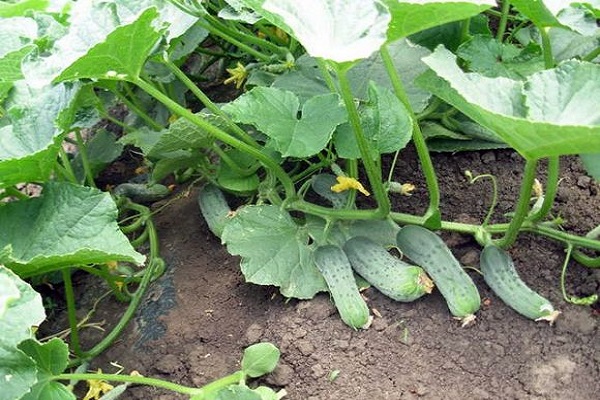
Gherkins
A feature of gherkin varieties of cucumbers are small fruits about 7 cm long, ripening already on the 3rd day from the formation of a green ovary. An early harvest of gherkins can only be grown in a greenhouse, since the plant does not tolerate coolness and is ready for planting in open beds only by mid-June.
Preparation of the soil for seedlings of cucumbers also requires special conditions. It should be loose soil saturated with magnesium, nitrogen and calcium with an average acidity value of 6 pH.
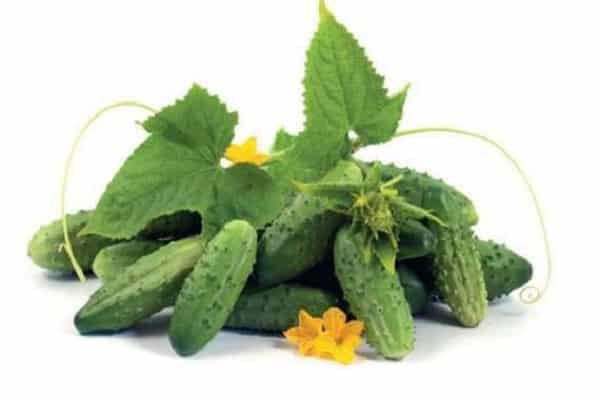
Hybrids
This is the only type of cucumber that, thanks to the efforts of breeders, has good data for early planting in open ground. Growing varieties of hybrids is less of a hassle, but their seeds are not suitable for propagation, so you will have to purchase fresh material for each new season. Planting seedlings of cucumbers can also be carried out in greenhouses, and on hybrids, the method of manual pollination of cucumbers brings better results than on pure varietal plants.

Growing in greenhouse conditions
Planting seeds of all types of bee-pollinated varieties of cucumbers in seedling boxes is carried out on February 1-6 (for greenhouse cultivation) or March 1-5 (for open ground). Planting in a permanent place is carried out by the formation of a fifth true leaf on the seedlings.
Depending on the area provided for planting, plants can be planted either in one or in two rows, observing the distance between cucumber bushes of 40 cm, with the same distance in the row spacing. For branched bush cucumber varieties, calculation of plants per 1m2, standard - 4 seedlings per square. For varieties requiring trellis fixation, the scheme provides for 3 plants per meter.
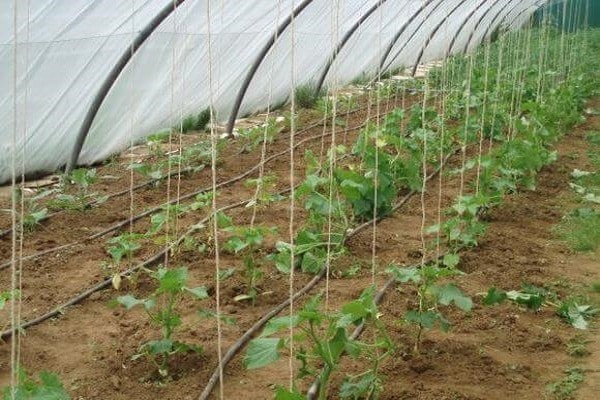
Plants are planted in soil heated to 19 C, into holes well-shed with warm water, deepening the cucumber seedlings to the cotyledon leaves.
How to pollinate cucumbers with bees
Pollination of cucumber seedlings in a greenhouse is carried out in two directions:
- by hand;
- bees and other pollen-carrying insects.

Unlike the first option, which is associated with personal efforts, the method of natural pollination of cucumbers is quite simple. In good weather, the doors and transoms are opened at the greenhouse and insects are allowed to freely penetrate inside. This method has a drawback - bees prefer open spaces and in a few hours not a single insect may appear above greenhouse plants.
How to attract bees? Gardeners use many methods, from hanging honey baits in the corners of the room to planting strips of petunias in front of a row of cucumbers, the smell of which attracts insects. An important step before inviting bees for pollination is to neutralize unwanted odors from the greenhouse. If, shortly before pollination, spraying from pests was carried out, then first the room is ventilated.
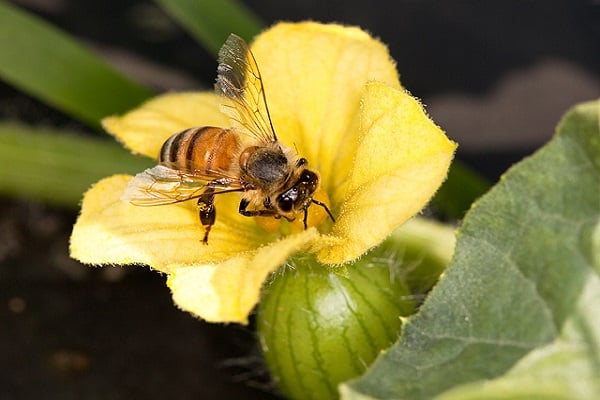
Artificial pollination
Before proceeding with the procedure, it is necessary to determine which flowers on the plant are of the female type and which are of the male type.... The male flowers are gathered together in groups in the axils of the lower leaves, while the female ones are scattered at a distance from each other and are clearly visible by the tiny formation of a green ovary below the flower.

The manual procedure is carried out by a pollinator - a cosmetic or painting brush, the tip of which gently removes pollen from the central part of the male plant and transfers it to the female pistil. Can you make a mistake with the timing of the procedure? Yes, since the inflorescence is only activated for pollination for 24 hours, and both types of flowers must be formed during this period. If this does not happen, then subsequently the color falls off in vain and the plant does not bear fruit.
There are a number of cases when bee-pollinated cucumber varieties give ovaries even without human or insect intervention, but the process in which plants pollinate on their own can only take place in open ground. At the same time, weather conditions contribute to fruiting - winds or rains, which move pollen from flower to flower, provoking self-pollination.
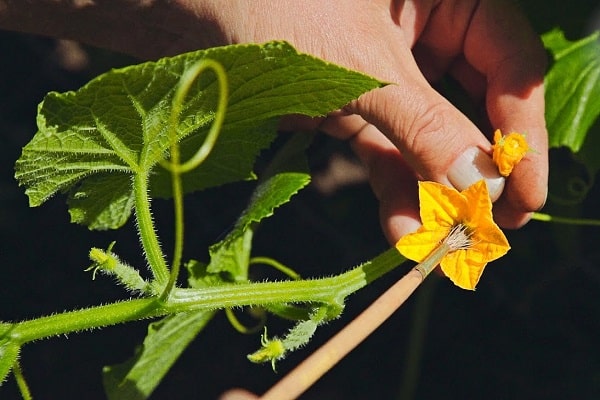
Bush formation
Formation of bee-pollinated cucumbers is no different from a similar procedure with self-pollinated plants. In any case, it is necessary to achieve as many fruit formations as possible, which means that it is necessary to provoke the development of lateral lashes. There is a slight difference in how to form early and late ripening cucumbers:
- in the first case, the pinching of the main shoot occurs through 9 leaves;
- in the second case, after 7.
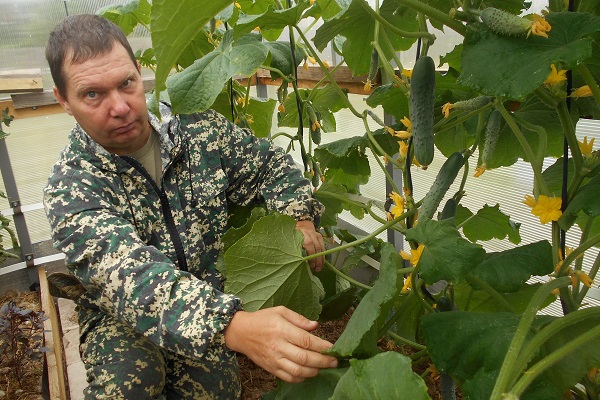
In parallel, you can adjust the thickening of the bush to better provide nutrition to the main stem.
The best varieties of bee-pollinated cucumbers
Top seven best bee-pollinated cucumbers in the greenhouse and outdoors:
- "Zubrenok". Hybrid of early maturity, producing a large number of female flowers.Designed for greenhouse cultivation and open ground (when sown from mid-May to June 7). The harvest time for this variety of cucumbers (from 12 to 14 kg per square meter) is 50 days from the day the sprouts appear. Fruits are medium-sized, without voids, without bitterness. Cucumber "Zubrenok" is suitable for preserving and preparing fresh salads.
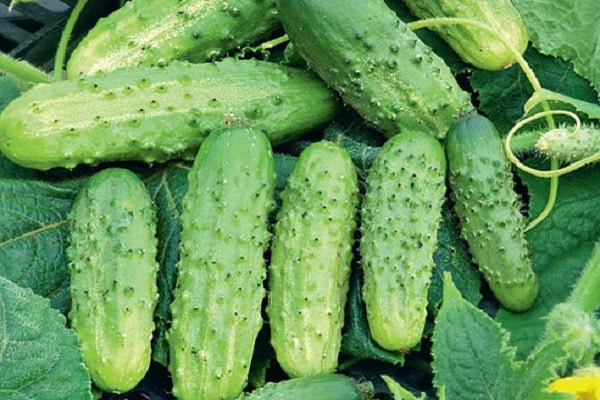
- Twixie. An ultra-ripe gherkin that allows for the first harvest on the 40th day of sprouting. The desired geometry of planting is 60 by 35 cm. The shape and characteristics of the fruits are standard for the gherkin type of cucumbers - the length is 7 cm, the tuberosity is average, the density of the fruit is high. Ripening of cucumbers on the bush occurs simultaneously, with a one-time collection of 4 kg. Cucumber "Twixi" is resistant to powdery mildew, tolerates long-term transportation well.
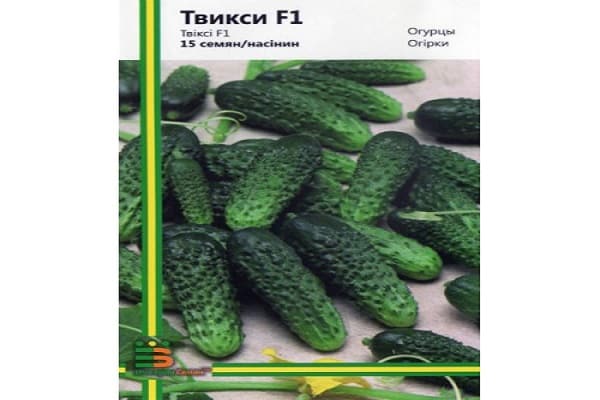
- "Moscow delicacy". Plants are self-pollinated in the presence of female and male flowers on the bush, but the pollination process requires appropriate weather conditions - wind and rainfall. If necessary, you will have to attract insects to the site or perform mechanical pollination by hand. The early ripe cucumber "Moscow delicacy" grows to an average size of 12-15 cm, has a neat shape, small tubercles and is resistant to yellowing when the fruit is overripe. Cucumber seeds of this variety are suitable for planting directly into open ground at a soil temperature of at least 17 FROM.
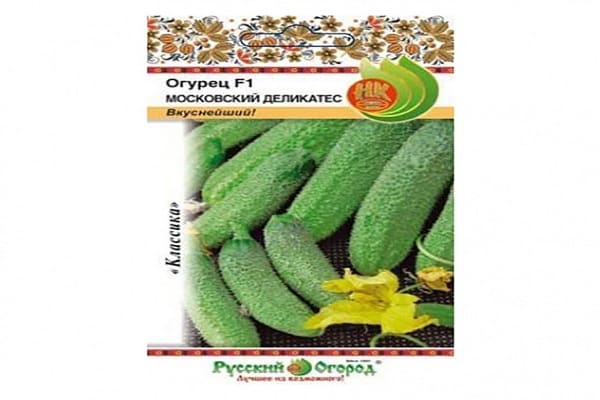
- "Nugget". A braiding cucumber of unlimited stem growth with one main shoot and underdeveloped lateral ones. Reviews of gardeners agree that cucumbers do not need to pinch the shoots and tops. Has flowers of both types, tolerant to decay of the stem and root system. Average yield from 1 m2 from 9 to 11 kg, the size of ripe fruits is small, within 11 cm with a weight of 80-90 g. Cucumber "Nugget" is suitable for long-term transportation while maintaining the presentation and good taste.
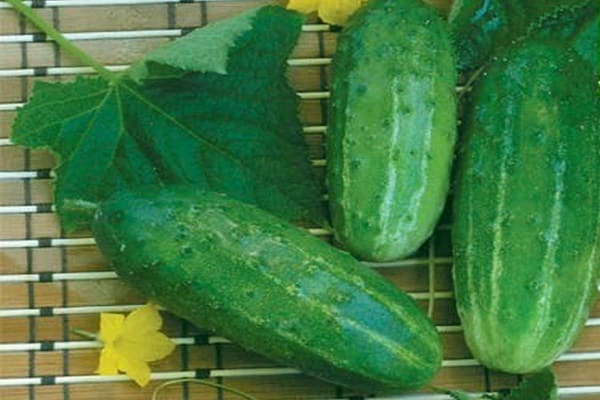
- Moringa F1. The bush is dominated by flowers of one, female species with little or no male inflorescences. The hybrid belongs to the medium early, with a yield of 50-52 days from sprouting. Recommended for growing by seedling method in the middle region of Russia and allowed for direct sowing in the southern strip. The yield is high, the fruits are small, about 7 cm, the taste is excellent. Cucumber "Moringa F1" needs to be shaped by pinching the side lashes.
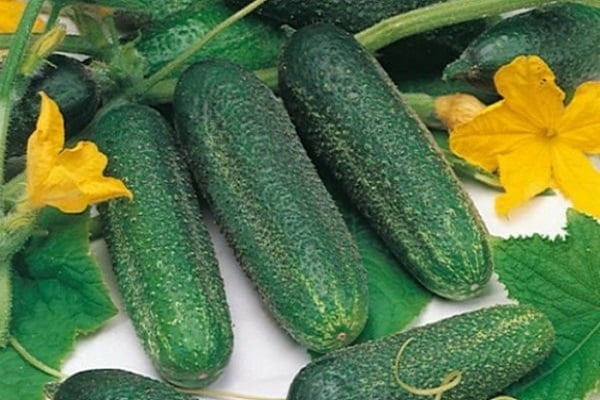
- "Hope F1". It belongs to ultra-ripe hybrids of a high degree of productivity, it is included in the varieties of cucumbers for open ground mainly grown in Russia. Fruits are medium in size, dense, without bitterness, do not form voids during heat treatment. The variety is tolerant to many diseases, but weakly resistant to root rot.
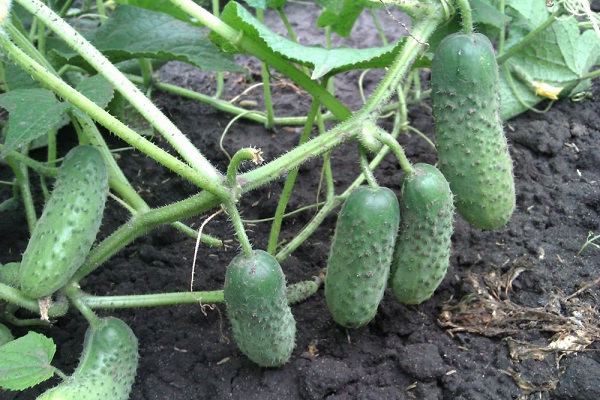
- Erofei. The bush is tall, differs in branching, forms flowers of both types. The variety is characterized by sparsely lumpy ellipsoidal fruits. Average yield - about 4 kg per sq. meters. Recommended cultivation - by seedlings when planting seed material to a shallow depth of 1 cm. The variety is moderately resistant to diseases.
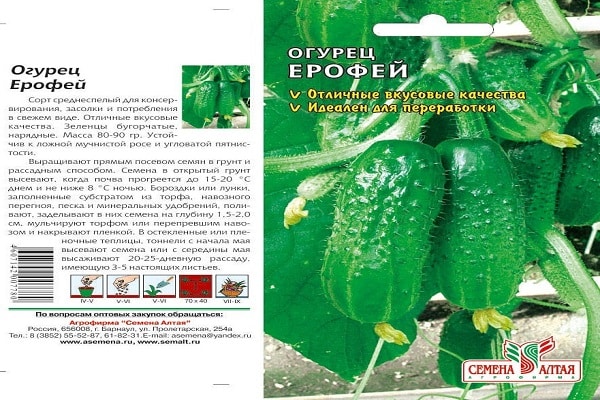
- "Rita F1". This variety of cucumbers is grown in order to simultaneously obtain large volumes of ultra-early fruits. Description of cucumbers Rita F1: gherkins of standard length, weighing up to 50 g, the bush actively bears fruit for two months. From the moment the first shoots appear and until the fruits ripen, 47-50 days pass. The variety is relatively cold-resistant, weakly susceptible to diseases, suitable for growing in seedlings.

Since cucumbers in the open field are defenseless against night frosts and summer heat, it is recommended to have mobile, quickly installed devices on the site for collecting a film tunnel or canopy.


